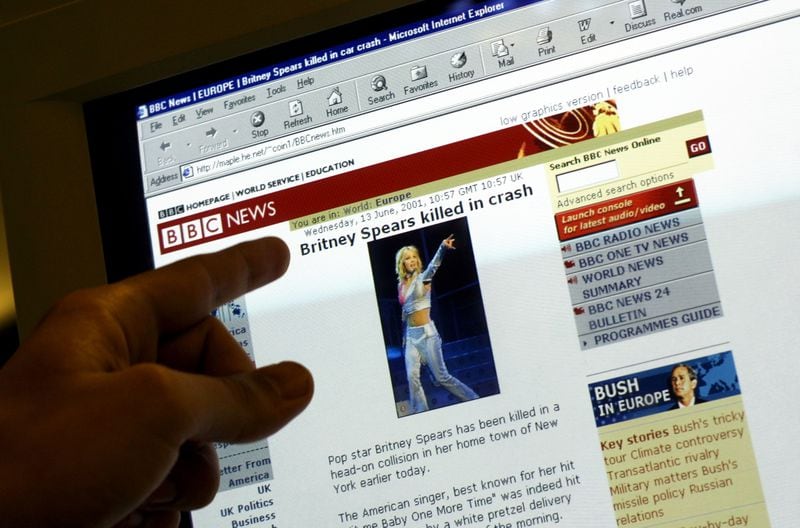The phrase “fake news,” popularized by Donald Trump, has been thrown around a lot in the last year. Trump uses the phrase to refer to news he believes is biased, unfair or irresponsible.
Trump often points the finger at CNN as an ardent producer of “fake news” and often identifies news networks on Twitter that he believes are subpar agencies of reporting.
1. The source is known to be shady
Certain sources are known to play it fast and loose with headlines and facts. Others make up stories altogether.
One way of reviewing the quality of a source is to check its name against PolitiFact's Fake News Almanac. Not every story on each site listed is fake, but there has been evidence found that the sites listed in the almanac have attempted to fool readers.
2. Other stories from the source are questionable
Look at the tone of the articles on a website to get a sense of what kind of stories it produces. If featured stories are about aliens, miracle cancer cures and the like, you’ll get a sense of the seriousness of the publication, which is a good indication of its integrity.
3. Reputable news sites aren’t carrying the story
When checking the legitimacy of a news story, consider this:
Search keywords from the story and topic on Google. What results come up? If sites like The New York Times, ESPN or The Washington Post are running the same story, it’s likely true. But if all the search results you find cite the same original source where you found the initial story, that may be a red flag.
Find a reputable source that has done its own reporting on a story to ensure its truth and accuracy.
4. The story predicts disaster
A fair number of fake news stories hook readers because they predict a future disaster. Yes, some of them are pretty incredible and seem obviously fake. But many of them play on common fears in an attempt to get an emotional reaction.
Consider any disaster story carefully, especially if it’s paired with a specific date. More often than not, it’s fake.
5. It reveals the cure for a major illness
This is another tried-and-true method for fake news to elicit that emotional response to get you to click on it. Maybe one study found promise in a cancer treatment that involved eating an apple a day, for example, but the ensuing story blew it all out of proportion.
6. The website carries a disclaimer
The Onion, the best-known satirical site, has become the brand name in satire. However, even it doesn't prominently display a label on its site that the articles are satirical. Less honest sites that are not widely known satirists can play on this confusion.
If you’re not sure about a website’s legitimacy, search around to see if there’s any kind of disclaimer. If you find one, that likely means the site can’t be taken at face value, especially if the disclaimer is worded confusingly. Legitimate sites don’t need disclaimers.
7. There’s a poll involved
Polling questions and results can be incredibly misleading, depending on how the questions are phrased. There are very few pollsters with good reputations.
When reading a story based on a poll, check to see who conducted the poll, the number of people surveyed, how they were selected and how the survey questions were phrased. If you have that info at hand, you should have a good idea as to the reliability of the story.
8. The website has an odd domain name
Read domain names carefully. If a story originates on a site where the last two letters are .ru, that’s a Russian site.
Other tricks include incorporating a real website’s address into its address, such as cnnrealnews.com instead of cnn.com.
Another is nearly using the name of a legitimate news site but misspelling it.
Credit: Sion Touhig
Credit: Sion Touhig
9. It makes you angry
One of the biggest ways fake news sites have been effective is by tapping into people’s fears and emotions. Many false news stories purposely play on fears and anxieties, knowing that doing so will make people follow their emotions.
Take a deep breath, step back and evaluate what you’re reading and who is writing it.
10. Check the experts
In addition to the Politifact site mentioned above, there are other sites devoted to debunking fake news. The oldest and most well known is Snopes.com, founded in the mid-1990s by David Mikkelson to fact check urban legends. Another is FactCheck.org, a project of the Annenberg Public Policy Center of the University of Pennsylvania, which tends to focus more on scrutinizing the statements of politicians and other public figures.






